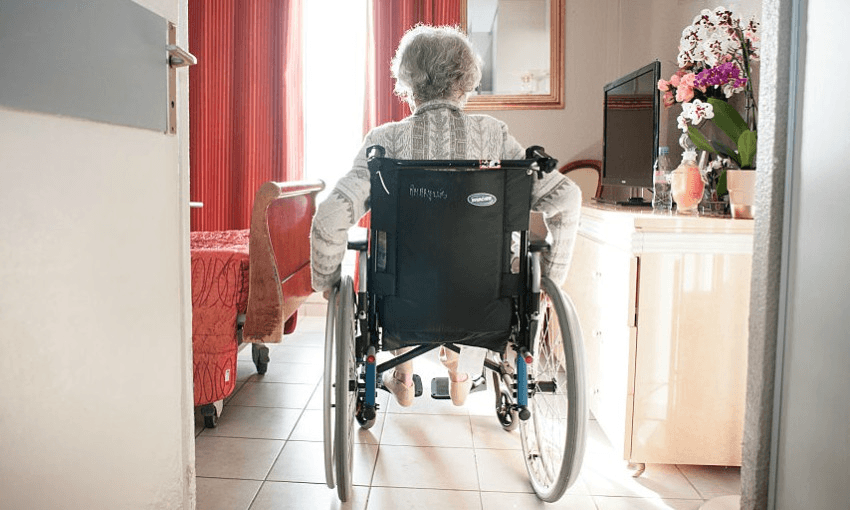Uncertainty over alert level rules in Auckland has seen a rest home open its doors to visitors for just one day, before shutting them again. As Stewart Sowman-Lund reports, care homes across the city are taking very different approaches to alert level two.
All 14 Bupa care homes in Auckland shut their doors yesterday, keeping friends and family away despite the city’s shift down from alert level three.
The care homes, however, had been open on Monday – welcoming visitors as long as they followed strict protocols put in place for Covid alert level two.
The decision to shut the homes to family and u-turn on previous plans for level two appears to be a result of uncertainty among some care home providers around how they should operate in Auckland, as the city continues to see new cases of Covid-19. Yesterday, there were five community cases with links to the existing cluster.
While Bupa opened and then shut its doors, Ryman Villages in Auckland were always going to be closed this week, with a message on their website attributing the decision to stay locked down on “continued growth in cases of Covid-19 in the Auckland community”.
By comparison, Selwyn Villages are operating with their own alert level three restrictions still in place: two nominated friends or family members can visit the home each day between 10 to 6pm, by appointment, and with additional precautions in place.
So while some care home residents welcome in friends and family after nearly three weeks of lockdown 2.0, others remain shut away.
Bupa New Zealand’s managing director Carolyn Cooper confirmed to The Spinoff that they had reversed on Monday’s decision to open as a result of comments made by the prime minister over the weekend.
Jacinda Ardern told media on Sunday that Auckland aged care facilities were being kept on “very strict settings” despite the shift down to level two.
Cooper, however, said they were none the wiser about what, specifically, those “strict settings” should be. Bupa reassessed the situation after a day at level two, taking into account the Ministry of Health recommendations and what other large providers were doing.
“We decided to conclude our alert level two visiting guidance on Monday afternoon and reinstated our alert level three restricted visiting. We, like other providers, have opted for a cautious approach to stepping down the levels,” she said.
Health minister Chris Hipkins encouraged aged care facilities in Auckland to err on the side of caution.
“We’re asking them to continue with the restrictions they’ve had in place for a little while longer,” he told The Spinoff.
“I think that’s a very prudent course of action. Because, obviously, the consequences of Covid-19 getting into a rest home are much, much higher than other places around the community,” he said.
No Ministry of Health representative fronted yesterday’s 1pm briefing and, when contacted by The Spinoff, no one would specifically address the disparity between Auckland care homes.
However, in a statement, a spokesperson emphasised that at alert level two, visits are permitted – if the provider wants to allow them.
“Visitors should check with the aged care facility directly prior to organising a visit [and] lengths of visits and visiting areas will be determined at the discretion of the facility.
“A provider may need to manage the number of visits to the facility. They will need to weigh up a number of factors including the resident’s health and the number of appointments the facility already has,” the ministry spokesperson said.
“If a family member is concerned they should talk with the facility manager directly in the first instance.”
Despite the lack of a blanket approach to how alert level two should be interpreted, particularly in “2.5” Auckland, the Aged Care Association told The Spinoff there was no ambiguity around how facilities could operate.
Chief executive Simon Wallace said his advice for this week aligned with the ministry: facilities can open to visitors, if they’re strictly managed. “We can’t compel, or mandate, our members to do anything, so if there are some that are not allowing visitors then that’s their prerogative,” he said.
“I don’t think there has been any mixed messaging,” Wallace said. “Some of our facilities have chosen, because they can, to stay at a higher [alert] level. It’s not the advice that we’ve provided [but] because they want to manage the risks, they have chosen to operate like that.”
